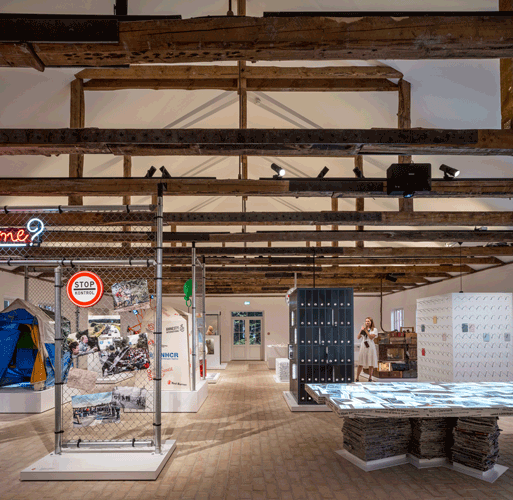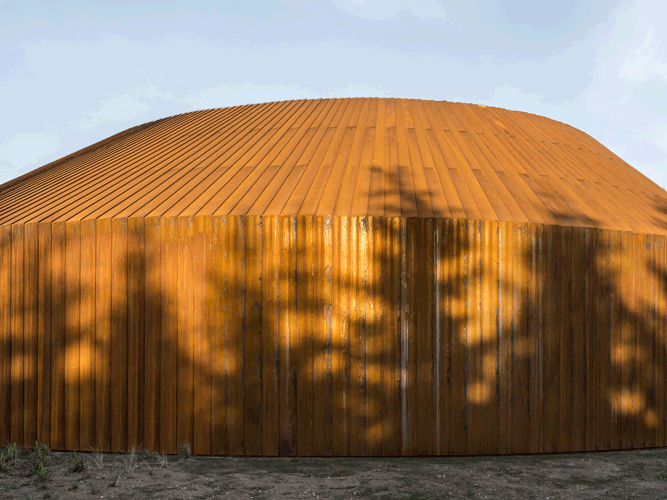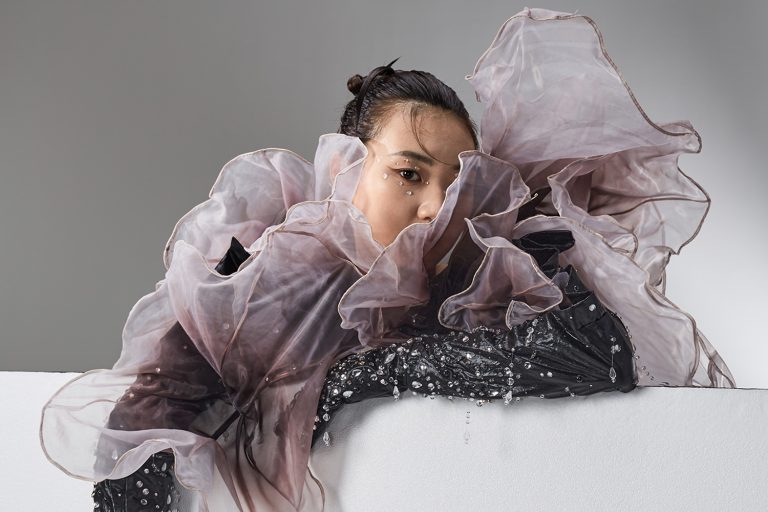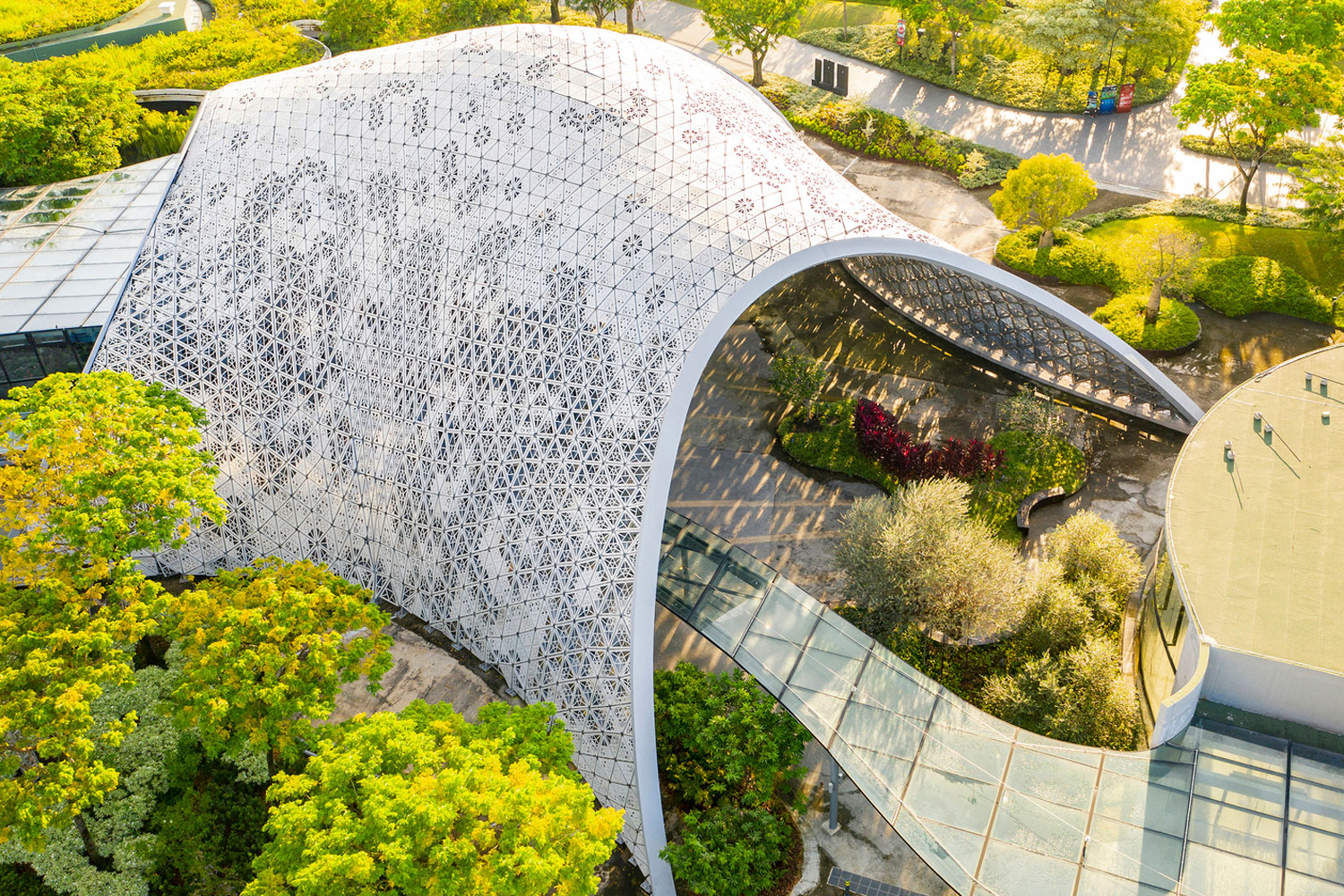
The site of Denmark’s largest Refugee Camp now evokes a historical vibe. A location that was once the refugee Camp of the World War II era and now houses a 1600 m2 museum. FLUGT museum depicts the life of refugees worldwide, acting as a connection between the past and the present. The existing buildings are remnants from the refugee camp era, adding a sense of nostalgia to the site. Moreover, the architectural intervention- museum structure further elaborates on this nostalgia. Thus, the design intervention here tries to retain the historic fabric through the built environment.

Furthermore, the design showcases the concept of adaptive reuse and regenerative design. This takes the visitors on a historical ride through refugees’ stories and worldly challenges. Hence, the intervention depicts their emotions and unheard incidents of their displaced lives. The design scheme encompasses two ancient elongated hospital structures with the FLUGT museum structure connecting the two. Therefore, the museum structure is not only a structural or architectural connection but is also a cultural intervention. Connecting the entrances of the structures, the museum space sets an experiential retreat, taking the visitors back in time.
The Museum Building

The volume between these two ancient structures is designed to have an irregular curved profile, carving out buffer space amidst the curved serpentine structure. This “pushed” curve orientation along the street helps create an inviting arrival plaza for the museum visitors. To maintain the visual fabric of the brick-clad ancient structures, the museum building is clas in corten steel. This helps maintain the red brick color, texture, and design language. The facade’s surface facing the arrival courtyard has floor-to-floor glass curtain walls to induce transparency.

This glass facade offers a panoramic view of the revealing view of a sheltered green courtyard, which marks the location of the refuge camp. Thus, the courtyard acts as a light source in the entry hall designed to be the temporary exhibition zone. Furthermore, the roof structure also intends to elaborate on the historic fabric, maintain the design language, and establish a new identity for the site. Thus, the roof structure of the museum building complements the sloping shingle roof of the hospital structure.
The Play of Materials

The play of corten steel, the glazing, and the series of timber members on the interior, orient the visitors along the museum wings, creating a sense of intrigue as one walks through the serpentine path. These design techniques facilitate the translation of the imagery of the old structure utilizing new age materials, thereby showcasing how architectural interventions can be designed to blend with the built environment. Therefore, the whole serpentine structure of the museum structure has a free-flowing metal-clad sloping roof, creating a sensory experience through design. As one proceeds towards the courtyard, a small mirror pool at the center reflects the sky above, adding to the artistic vibe. Hence, the landscape along the pool further emphasizes the regional identity.
Final Thoughts

The whole design scheme helps recreate history in the modern environment. Moreover, it also helps conserve and extend the building life using advanced conversation and building methodologies. Thus, the whole experience at FLUGT helps the visitors experience an important episode of Danish history from the refugee’s perspective and their life. Hence, FLUGT sheds light on past events. It is an artistic recreation of an untold story.

Project Info:
Location: OKSBØL, DENMARK
Architects: Bjarke Ingels Group
Project Architect: Frederik Skou Jensen
Project Leader: Frederik Lyng
Collaborators In Charge: Bjarke Ingels, Ole Elkjær-Larsen, Finn Nørkjær
Category: Museum
Year: 2022
Area: 1600 m²
Photographer: Rasmus Hjortshoj


















































